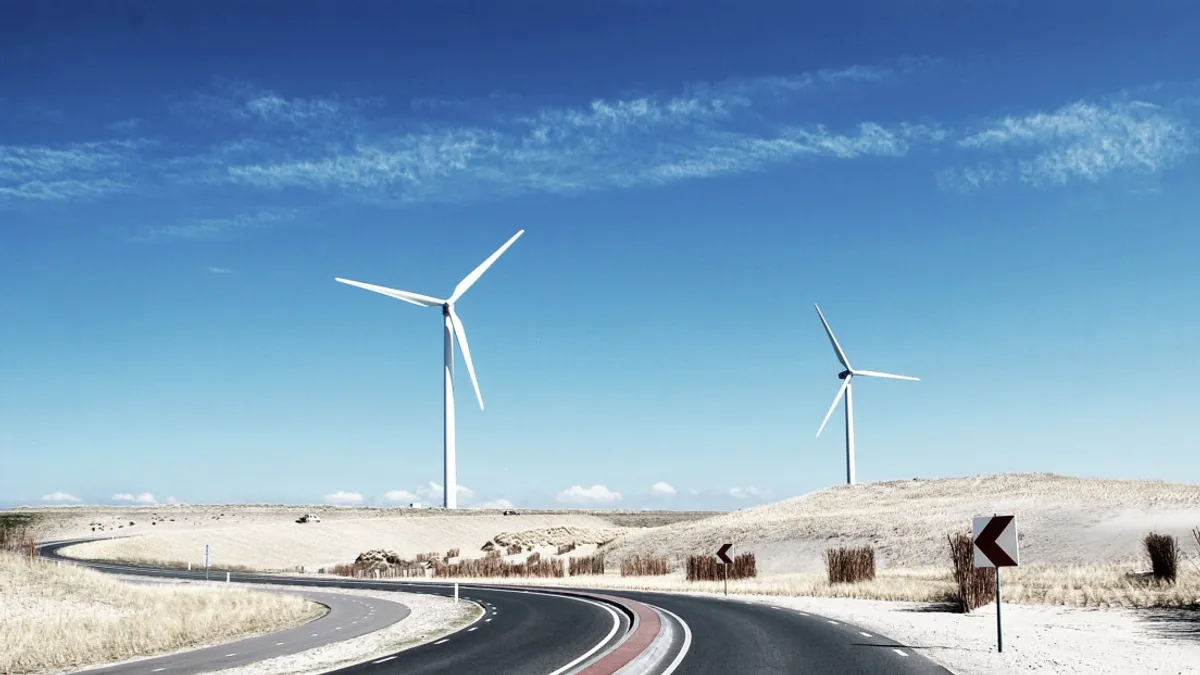Dive Brief:
- Investor-owned utilities that have committed to net-zero or carbon-free electricity goals by 2050 are behind in that pursuit and not yet taking steps to close the gap, according to a new report from Deloitte.
- But current circumstances are advantageous for utilities to focus on transitioning to renewables, the report said. "Conditions are currently in place for utilities to … close most of the fossil fuel retirement and renewables addition gaps over the next decade," said Kate Hardin, executive director for the Deloitte Research Center for Energy & Industrials and a co-author of the report.
- Hardin said environmental stewardship and profit maximization used to involve a tradeoff when coal was the lowest-cost energy resource, but that no longer applies. "It's now increasingly cheaper to build new renewables-plus-storage than to continue operating many coal plants," she said.
Dive Insight:
Deloitte's report, "Utility Decarbonization Strategies," provides a roadmap for investor-owned utilities to close the existing gap they face in decarbonizing over the next 30 years, starting with taking advantage of immediate conditions that make renewables a cost-effective investment.
The report noted that 43 of the 55 parent investor-owned utilities in the U.S. have emissions reduction targets and 22 have net-zero or carbon-free electricity goals. Currently, the U.S. electric grid relies on carbon-emitting fossil fuels for 63% of its generation, and leading utilities have harnessed only 9 GW out of a 400 GW distributed solar potential in their territories, according to the report.
"There are significant gaps between decarbonization targets and the scheduled fossil-fuel plant retirements, renewable additions, and flexibility requirements needed to achieve full decarbonization," the report said. "The math doesn't yet add up."
Bruce Biewald, founder and CEO of research and consulting firm Synapse Energy Economics, said it is "laudable" that an increasing number of electric utility companies have announced goals targeting net zero carbon emissions by 2050. However, he said the resource plans of utilities rely on "magical thinking where investments in coal and gas infrastructure continue, and the carbon emissions gap is addressed with technologies that have wildly expensive costs, limited potential, poor demonstrated performance — or that simply do not exist."
"Meanwhile, plentiful opportunities to invest in resources like solar, wind and energy efficiency go untapped, even though they are demonstrated and relatively inexpensive," Biewald said. "Electric utilities need to be at the center of energy system decarbonization efforts, but other than adopting long-term goals, utility efforts to date have emphasized a commitment to sunk costs and the status quo."
According to Edison Electric Institute (EEI), a trade group for investor-owned utilities, members have collectively reduced their carbon emissions approximately 45% below peak 2005 levels.
"EEI's member electric companies are committed to getting the energy they provide as clean as they can as fast as they can, while keeping electricity reliable and affordable for customers," spokesperson Brian Reil said.
Utilities have time to catch up, according to Deloitte's report. Hardin said the gap is "not as important as one might think because only recently has decarbonization become a win-win-win proposition for all stakeholders. The economic, technological and socio-environmental case for decarbonization has never been stronger."
"Costs have also recently fallen to the point where transitioning to renewables has become self-evident," she said. "Only recently have investors elevated decarbonization as an imperative for carbon-heavy companies. And only recently have policymakers and commissioners started rejecting natural gas-heavy resource plans from utilities."
Hardin pointed out that while investor-owned utilities that are particularly carbon-heavy right now face the most work, they also have the "greater upside."
"Their regulated status allows them to profitably decarbonize today," Hardin said. "They can potentially grow their rate base as they replace coal with increased renewables investment, while offering higher returns to shareholders, lower rates to customers, transition assistance to affected workers and communities, and cleaner air and water to all."
The Deloitte report splits its strategies for utilities into three separate decades, reflecting the near-term, mid-term and long-term. From 2020 to 2030, Hardin and her co-authors say utilities should focus on retiring or converting fossil fuel generation and deploying solar and wind paired with storage on the grid. From 2030 to 2040, the report says utilities should aim to reshape demand by harnessing behind-the-meter sources. Finally, from 2040 to 2050, Deloitte points to vehicle-grid interactivity, seasonal energy storage with hydrogen, and direct air capture of carbon, among other technologies utilities can adopt to achieve their goals.
The strategies are designed to capitalize on three trends already shaping utilities' decarbonization opportunities: a fossil fuel fade, a solar and wind sweep, and infrastructural innovation that is enhancing the electric and gas system's ability to support decarbonization.














